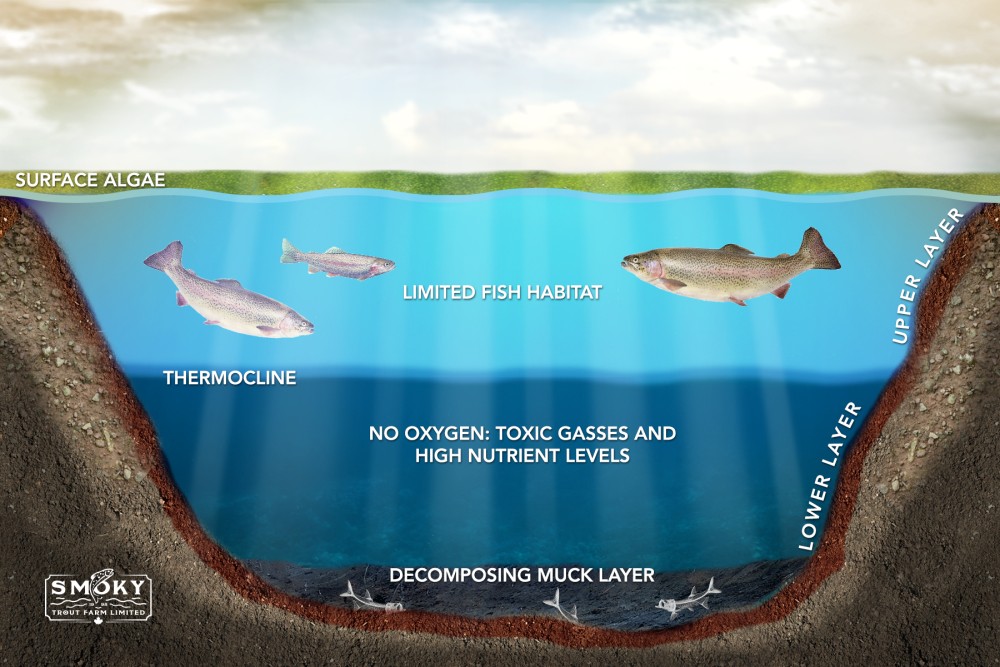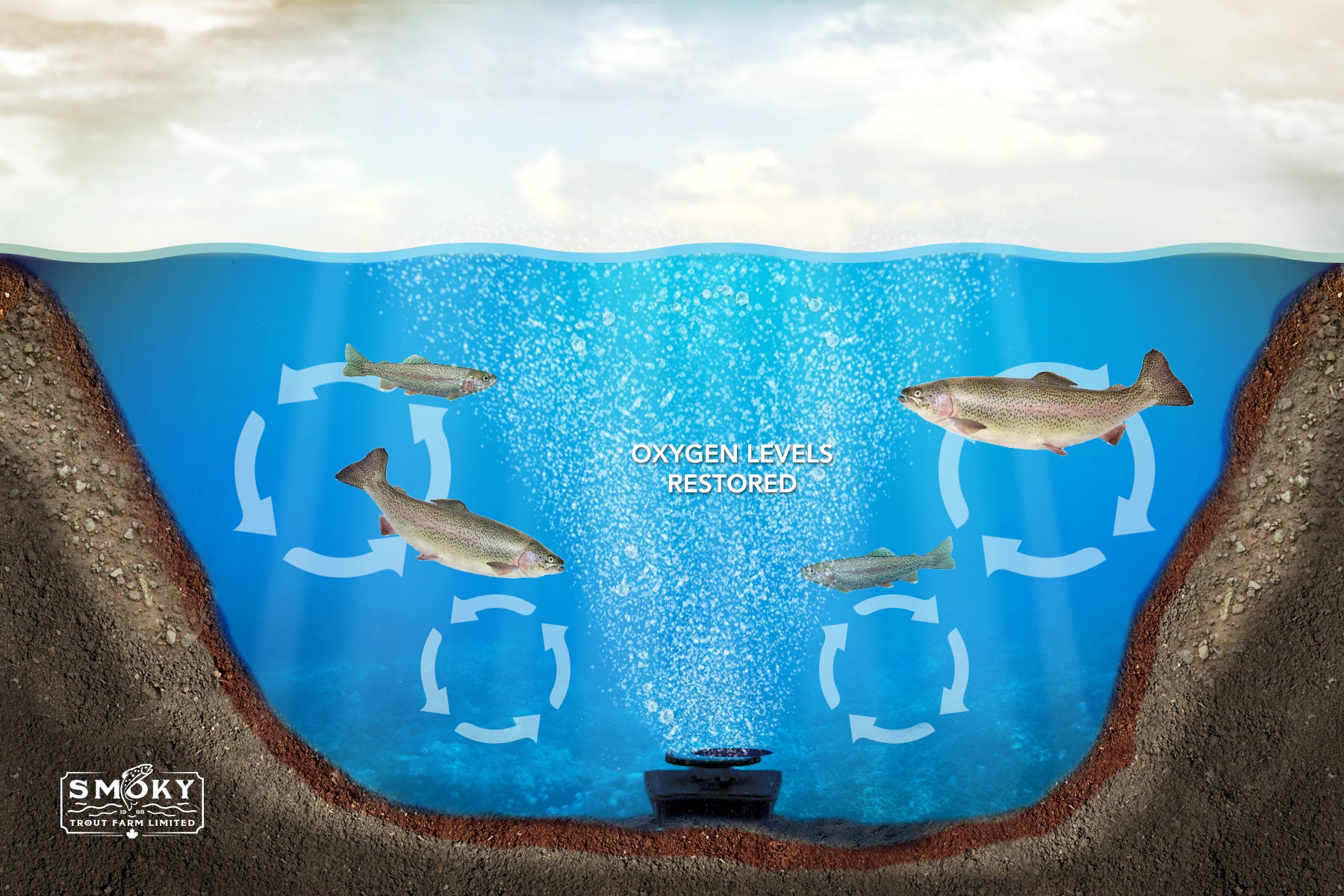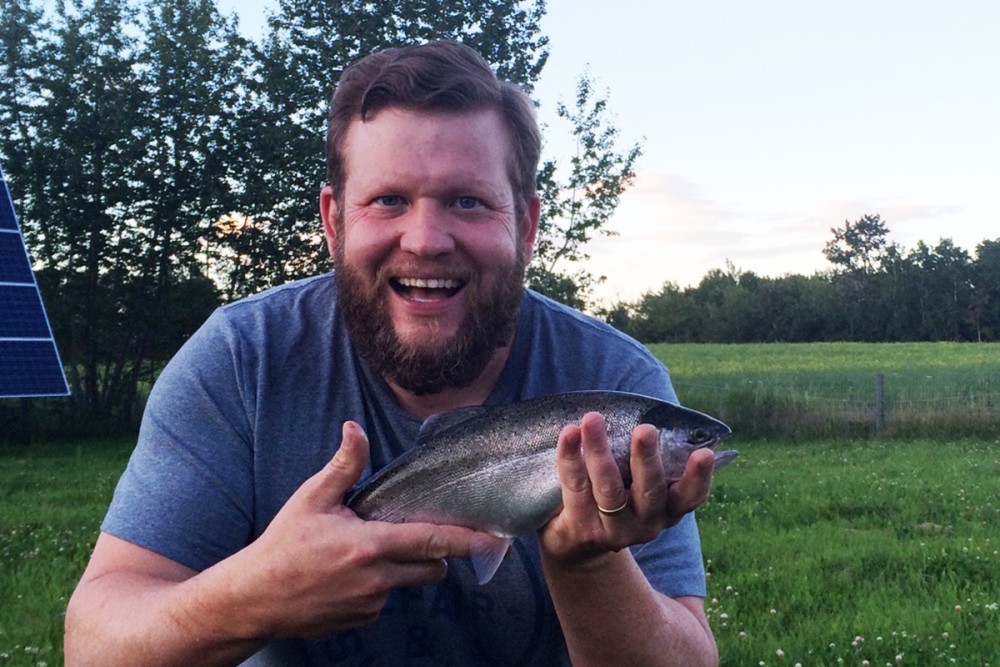Aeration
Oxygen is essential.
Over time organics accumulate in the bottom of a waterbody. The naturally occurring microbes that degrade this “muck” need oxygen. The more muck at the bottom of a pond, the more bacteria there will be and the more oxygen they will need. The oxygen these bacteria use is called sediment oxygen demand. When this demand exceeds the rate of oxygen being added to the water column by photosynthesis – from aquatic plants and algae – and from surface wind action, the dissolved oxygen (DO) levels in your pond will begin to drop. If it drops far enough this can lead to fish kills.
Many ponds also experience temperature stratification. In the summer this occurs when the surface water (epilimnion) is heated by the sun and the deeper water (hypolimnion) stays cool. In the winter, ice cover cools the epilimnion while the hypolimnion is kept warmer by the earth. In both cases, this temperature differential prevents mixing and the transfer of oxygen. The oxygen demand from the muck at the bottom uses up the oxygen in the hypolimnion, often reducing DO levels below what fish need to survive.
One of the biggest causes of fish kills is low DO. In the winter this happens when the sediment oxygen drops DO levels below what fish need to survive. When the pond is covered with ice wind cannot add oxygen to the water column and when that ice is covered with snow photosynthesis stops. In the summer the culprit is usually turnover events. After a period of warm weather when stratification has set, a sudden change in weather like a cold wind or rain shower quickly cools the surface water causing them to sink, mixing the water in the pond. If the hypolimnion has low DO this mixing will cause the DO in the epilimnion to drop suddenly. If it drops low enough, it will kill fish.

Another impact from thermal stratification is the release of nutrients from the sediment. Oxygen keeps phosphorous (P) bound to (Fe) in the sediments. When DO levels drop below a certain level this P is released back into the water column where it becomes fertilizer for algae, often triggering blooms.
Bottom Diffused Aeration
A bottom diffused aeration system uses a compressor to pump air to the bottom of a pond where it is broken up into tiny bubbles. As these tiny bubbles rise, they pull water from the bottom of the pond to the surface where it is saturated with oxygen by the wind. This oxygen saturated water circulates to the bottom to replace the water being drawn to the surface by the bubbles. There is also some oxygen transfer directly from the bubbles to the water. This restores the oxygen levels to the entire waterbody, maximizing fish habitat and reducing nutrient release from the sediments

Proper sizing of an aeration system is essential. The surface area and depths of a pond are needed to determine the number and placement of diffusers as well as the size of compressor required. The wrong size of system can cause water quality deterioration.
If you don’t know what you need, reach out to us for help by completing this form:


